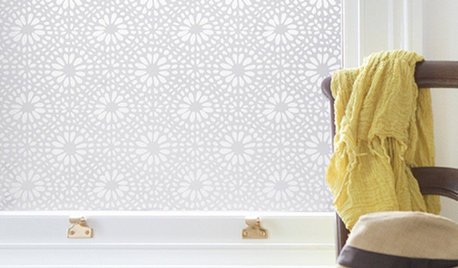Please Help with Leaf Problem
Geoff S
12 years ago
Related Stories

HOME OFFICESQuiet, Please! How to Cut Noise Pollution at Home
Leaf blowers, trucks or noisy neighbors driving you berserk? These sound-reduction strategies can help you hush things up
Full Story
GARDENING GUIDESSolve 3 Common Landscape Problems — With More Plants
Sometimes the best defense is a good offense
Full Story
LANDSCAPE DESIGNProblem Solving With the Pros: How to Build a Garden in an Urban Canyon
Skyscrapers, noise and deep shade create an unlikely sweet spot for a timeless green retreat in New York City
Full Story
DECORATING GUIDESSolve Privacy Problems With Window Film
Let the light in and keep prying eyes out with an inexpensive and decorative window film you can apply yourself
Full Story
ECLECTIC HOMESHouzz Tour: Problem Solving on a Sloped Lot in Austin
A tricky lot and a big oak tree make building a family’s new home a Texas-size adventure
Full Story
HOUSEPLANTSMother-in-Law's Tongue: Surprisingly Easy to Please
This low-maintenance, high-impact houseplant fits in with any design and can clear the air, too
Full Story
EARTH DAYHow to Help Your Town’s Beneficial Birds and Bugs
Make a habitat using local materials to provide a home to the creatures that help our gardens
Full Story
COLORPaint-Picking Help and Secrets From a Color Expert
Advice for wall and trim colors, what to always do before committing and the one paint feature you should completely ignore
Full Story
MOVINGRelocating Help: 8 Tips for a Happier Long-Distance Move
Trash bags, houseplants and a good cry all have their role when it comes to this major life change
Full Story
GARDENING GUIDESGreat Design Plant: Ceanothus Pleases With Nectar and Fragrant Blooms
West Coast natives: The blue flowers of drought-tolerant ceanothus draw the eye and help support local wildlife too
Full StoryMore Discussions






igo4fish
Geoff SOriginal Author
Related Professionals
Forest Park Landscape Architects & Landscape Designers · Hyattsville Landscape Architects & Landscape Designers · Prairie Ridge Landscape Architects & Landscape Designers · Tomball Landscape Architects & Landscape Designers · Belvedere Park Landscape Contractors · Boca Raton Landscape Contractors · Mesa Landscape Contractors · New Braunfels Landscape Contractors · Roseville Landscape Contractors · Green Bay Decks, Patios & Outdoor Enclosures · West Hills Decks, Patios & Outdoor Enclosures · Woodstock Decks, Patios & Outdoor Enclosures · Clarksburg Fence Contractors · San Antonio Fence Contractors · Orangevale Fence Contractorshoosierbanana
igo4fish
hoosierbanana
Geoff SOriginal Author
hoosierbanana
igo4fish
hoosierbanana